While we do most of our moisture testing on stucco homes, moisture testing isn’t just for stucco and stone veneer. Moisture intrusion can happen with any type of siding, and it’s always an expensive repair when left unchecked.
Not long ago, some friends of mine expressed concern about some dirt that started showing up below the corner of their living room window. They asked me to take a look, and the photo below shows the “dirt” they were talking about; click on the image to see a larger version.
Can you guess what caused this “dirt” to show up?
The title of this blog post probably gives it away, but before I show photos of the rotted wall, let me first explain all of the stuff that went wrong. To start, here’s a photo of the front of the house. It’s a little tough to see through the tree, but there are no gutters at the upper section of the roof, and the valley at the upper roof dumps water onto the lower roof. From there, the lower roof is supposed to direct water into the gutter.
If there had been gutters installed at the upper portion of the roof, all of that water would have been dealt with, but instead, the lower roof gets pounded.
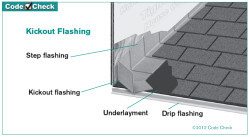 At the lower portion of the roof, there should have been a piece of kick-out flashing installed where the roof ends above the window, but there was none present. This allowed water that ran down the roof/wall intersection to leak into the wall behind the vinyl siding.
At the lower portion of the roof, there should have been a piece of kick-out flashing installed where the roof ends above the window, but there was none present. This allowed water that ran down the roof/wall intersection to leak into the wall behind the vinyl siding.
Finally, there was no water-resistive barrier installed behind the vinyl siding. As I mentioned in my blog post about how to inspect your own siding, vinyl siding isn’t designed to be watertight. It’s only supposed to keep most of the water out. It works because there is supposed to be a weather-resistive barrier installed behind the siding, such as Tyvek®, which is a brand name that is somewhat synonymous with house wrap. Unfortunately, water-resistive barriers weren’t specifically required by the MN State Building Code until 2003, so it was pretty much hit-and-miss up until then. In this particular case, it was a big “miss”. Without a water-resistive barrier, all of the water leaking behind the siding saturated the wall sheathing and leaked into the wall cavity, where it caused major damage.
I did some moisture testing around the window to confirm my suspicions, then we took the siding off to get a good look at the damage.
And here are a few photos of the repair in progress:
Nasty, huh? Thankfully it was just vinyl siding, which does a pretty good job of allowing the wall to dry out. If this had been stucco siding, the damage likely would have been much more extensive and the repairs much more expensive.
Remember, the only visible evidence of this water damage was the little black flecks that had made their way through the window and landed on the carpet. I suspect those were little pieces of rotted wall sheathing blowing into the home during periods of heavy wind, but I’m not 100% sure.
This is the type of damage that home buyers try to avoid when buying any home, and this is why some home buyers choose to have moisture testing performed on homes with vinyl siding. Vinyl does a fantastic job of hiding this kind of damage. While moisture testing on stucco homes is considered an invasive inspection and requires special permission from the homeowner, that’s not the case for vinyl. Moisture testing of vinyl-sided homes is done by using a non-invasive surface scanner to quickly scan large areas of the siding for moisture intrusion, and then followed up with pin-probe testing behind the siding to verify the results of the surface scanner. The siding is then popped back into place, leaving the siding in its original condition. This is a non-invasive inspection that requires no special permission from the homeowner.
If you’re buying a home with vinyl siding or you already own a home with vinyl siding and you have concerns about water intrusion, consider having moisture testing performed. Vinyl-sided homes with no moisture barrier should always raise concerns, but as you can see in the video above, moisture intrusion can still occur when a moisture barrier is present. For information about how moisture testing is done on other types of siding, scroll to the bottom of this page: https://structuretech.com/moisture-testing/.

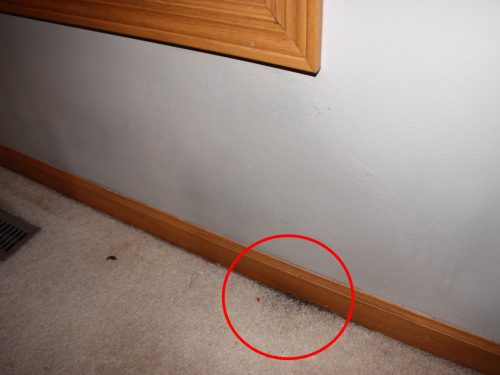
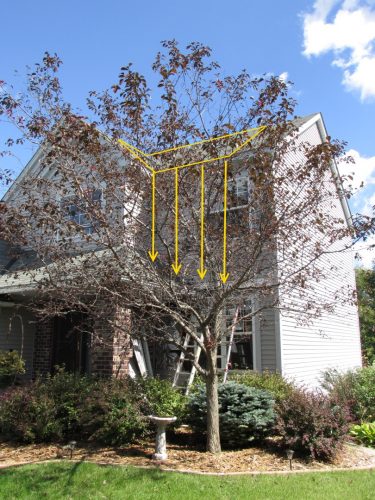
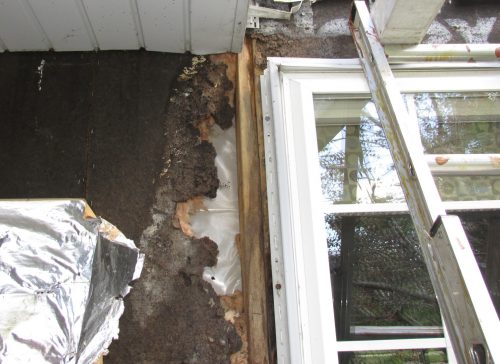
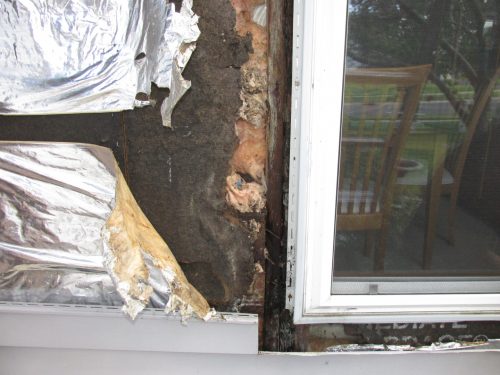
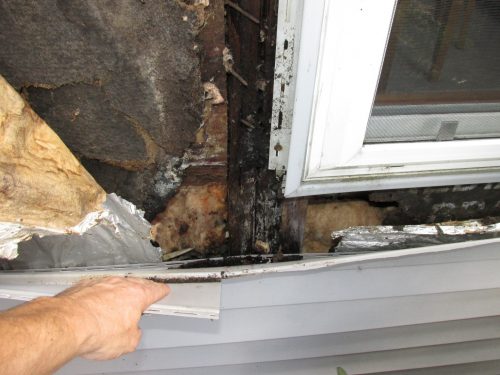
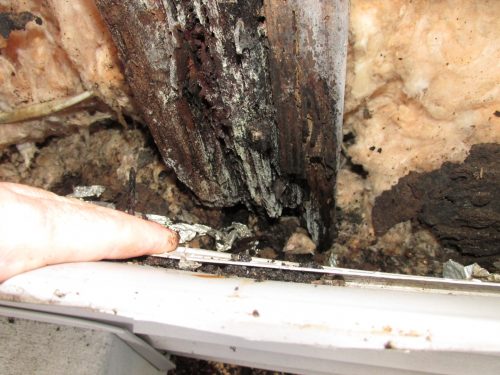
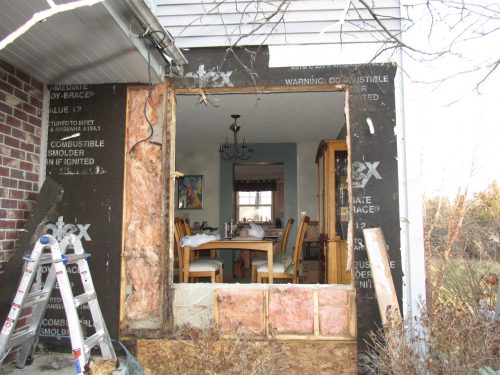
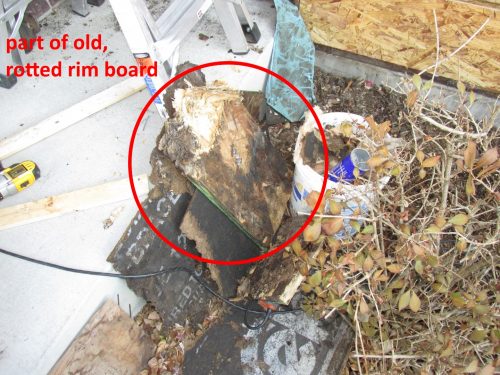
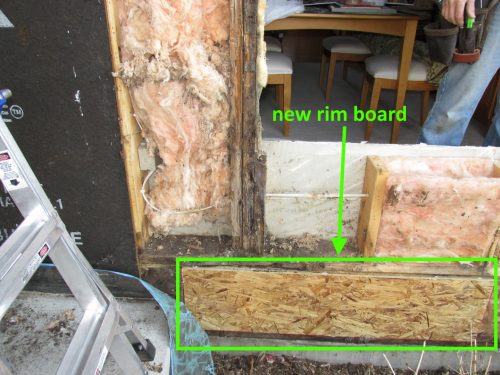
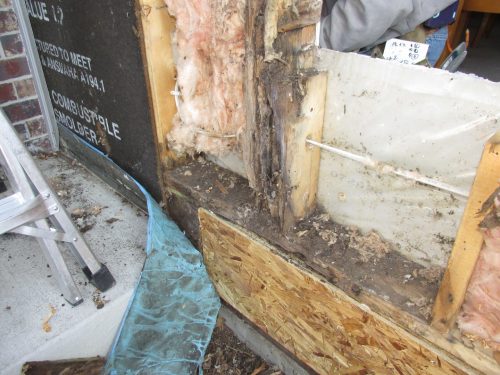
Barry 2
September 20, 2022, 3:04 pm
The dirt on the carpet may be the result of it being wet occasionally following major rain events. It would then attract and hold dirt bold dirt from the air similar to wall and ceiling rafters “ghosting” from Condensation due to to poor insulation.
Dale Kopp
November 28, 2022, 10:07 am
Hi Reuben, What causes condensation on the middle part of the walls — exterior and interior on bathroom walls of 3 different bathrooms? Exhaust fans are present. Any advise would be appreciated. Thank you
Reuben Saltzman
November 28, 2022, 4:40 pm
Hi Dale, check out this blog post on that topic: https://structuretech.com/qa-siding-stains-why-do-houses-cry/ . Be sure the follow the links for more information about different types of home ventilation strategies.
But in short, it’s happening because of moisture in the air and because of pathways for that moisture to get into the walls. It’s difficult to address the pathways on an existing home, so the best strategy is to control the moisture in the air. While the exhaust fans are present, perhaps they’re not being used enough? Perhaps they’re not working properly? Perhaps they’re not being run for long enough after people take showers?
Mike Marquis
December 13, 2022, 9:42 pm
Well, written article. I have vinyl siding on my home and I notice something very similar and I decided to check it out and sure enough the outside of my garage is completely rotted away.